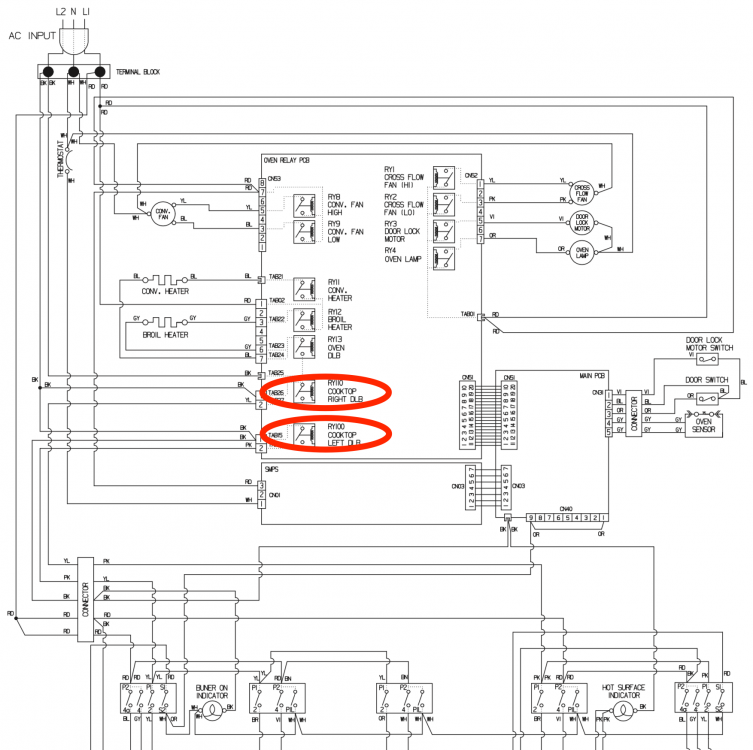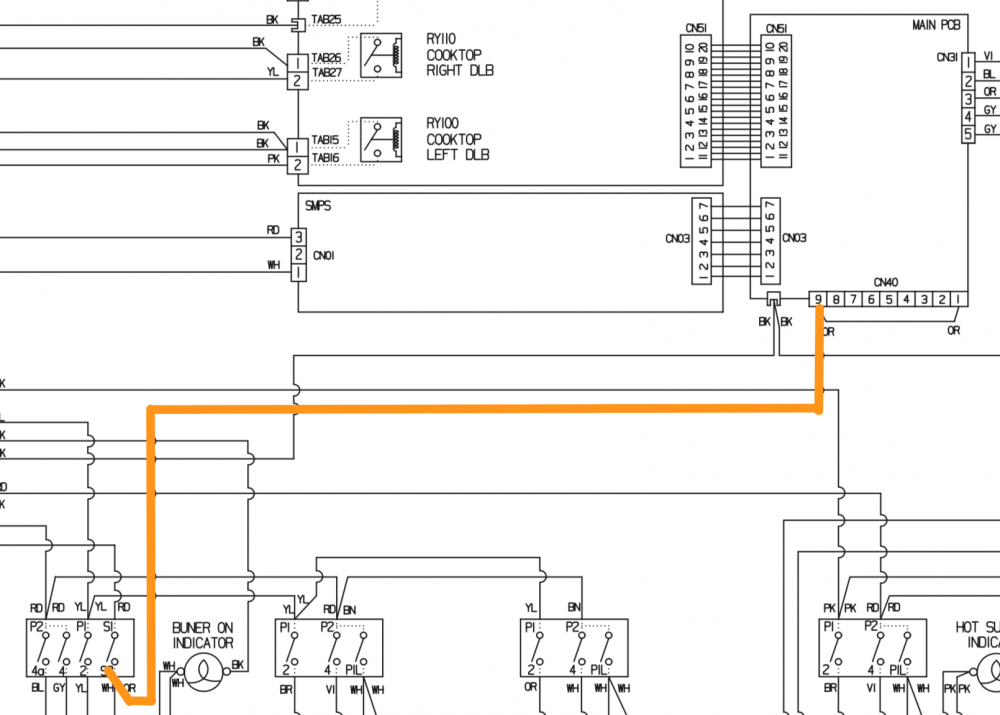Take a look at this schematic, paying particular attention to the two circled relays.

What the relays actually do is pretty simple — they switch L2 to the left and right burners on the cooktop. But slightly more perplexing is the question of how the relays close when those burners are turned on. We see the row of four burner switches along the bottom of the schematic above, but how do those switches cause those DLB relays to close?
A quick recap on how relays work: a relay is an electromechanical device that allows a small amount of voltage to control a much larger voltage. These are often referred to as the control voltage and the operating voltage respectively. Each relay contains a solenoid coil that, when energized with the control voltage, actuates the relay and switches the operating voltage. So our question is how does one of those cooktop switches closing cause these relays to close?
There’s not connection between the cooktop switches and the relay board where those DLB relays are located. However, the relay board is connected to the main control board — the brain of the machine. And this is where we can spot the answer to our question: a sensing line.

In order to tell that the cooktop switch has been closed, all the control board needs to do is monitor the voltage on that orange line. Once it senses voltage, it then tells the relay board (through CN51) to close the relays. Simple enough!
Want to learn more about reading schematics and using them to understand any circuit and troubleshoot any problem? Click below to check out our Core Appliance Repair Training course right here at the Master Samurai Tech Academy.